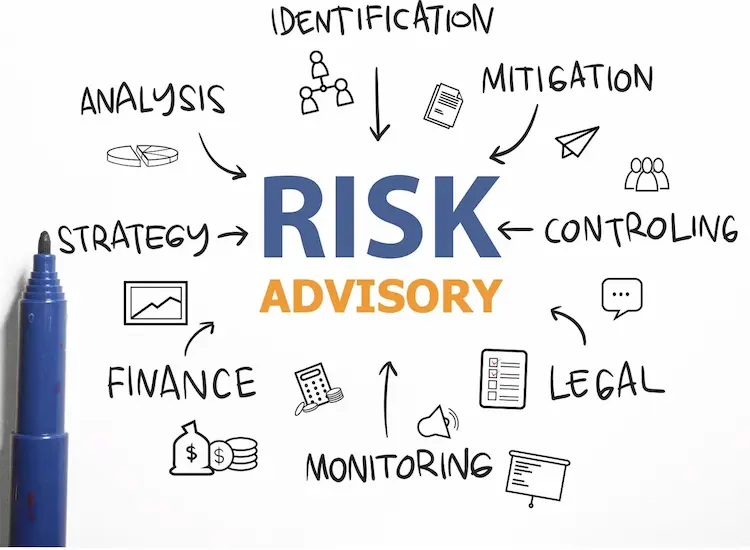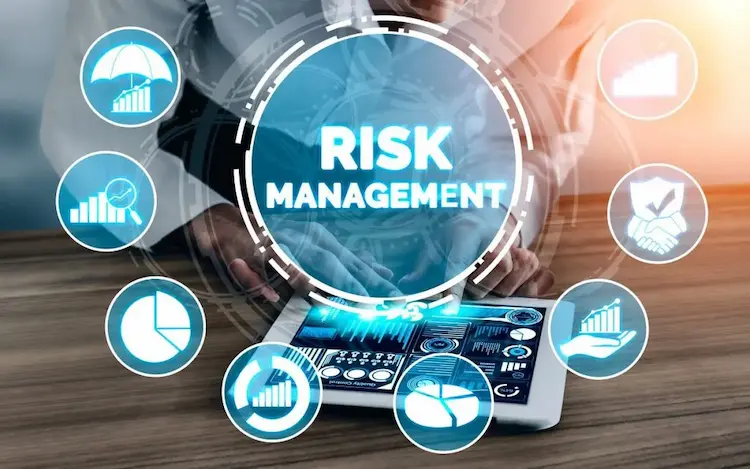Imagine your business as a sturdy building. It can withstand everyday bumps and breezes. But what if a storm hits? Would your building crumble, or would it weather the blow? This is where resilience comes in.
Just like a well-built structure, a resilient business can bounce back from challenges. Effective risk advisory acts like the engineering plan for your business’s resilience. It helps identify potential threats (the storm) and create safeguards (structural reinforcements) to minimize their impact.
Why is Business Resilience Important?
The business world is full of uncertainties. From economic downturns to technological disruptions, unexpected events can throw your operations into disarray. A resilient business, however, is prepared to handle these challenges. Here’s how resilience benefits your company:
- Reduced Downtime: When a crisis hits, a resilient business can recover quickly, minimizing disruptions and lost revenue.
- Enhanced Reputation: Customers appreciate businesses that can navigate difficulties smoothly. Resilience builds trust and strengthens your brand image.
- Improved Decision-Making: By proactively identifying risks, you can make informed choices that safeguard your future.
- Competitive Advantage: In a volatile market, resilience is a differentiator. It shows investors and partners that you’re a reliable and adaptable company.
What is a Risk Advisory?

Risk advisory is a service offered by professional firms that specialize in identifying, assessing, and mitigating risks for businesses. To fully leverage these benefits, engaging with professional risk advisory services can provide the expertise and support needed to navigate complex risk landscapes effectively.
These advisors act as your partners in building a robust risk management strategy. Here’s what they typically do:
- Risk Identification: They work with you to pinpoint potential threats across various areas like finance, operations, technology, and legal.
- Risk Assessment: They analyze the likelihood and potential impact of each risk. This helps prioritize which threats deserve the most attention.
- Risk Mitigation: They develop strategies to minimize the impact of identified risks. This could involve implementing safeguards, creating contingency plans, or diversifying operations.
- Risk Monitoring: They constantly monitor the business environment for emerging threats and adjust the risk management plan accordingly.
How Does Effective Risk Advisory Shield Your Business?
Think of effective risk advisory as a multi-layered shield protecting your business from harm. Here’s how it works:
- Early Warning System: By proactively identifying risks, you gain valuable lead time to prepare. This allows you to take preventative measures before a crisis unfolds.
- Informed Decision-Making: Risk advisors provide data-driven insights to help you make informed choices. You can allocate resources efficiently and focus on the most critical risks.
- Contingency Planning: Effective risk advisory involves creating contingency plans for various scenarios. This ensures your business has a roadmap for recovery in case a crisis strikes.
- Improved Risk Culture: Risk advisors can help foster a culture of risk awareness within your organization. This means employees are empowered to identify and report potential threats, further strengthening your defenses.
Building a Strong Risk Management Strategy

Here are some key steps to building a strong risk management strategy with the help of risk advisory:
- Define Your Risk Appetite: Every business has a different tolerance for risk. Risk advisors can help you determine your risk appetite, which is the level of risk you’re comfortable taking on.
- Conduct Regular Risk Assessments: The business landscape is constantly changing. Regularly assess your risks to ensure your strategy remains effective.
- Implement Risk Mitigation Strategies: Once you’ve identified and assessed risks, put mitigation plans into action. This could involve anything from investing in cybersecurity measures to diversifying your supply chain.
- Test and Refine Your Strategy: Regularly test your contingency plans through simulations and exercises. This helps identify weaknesses and allows you to refine your strategy for better preparedness.
- Communicate Effectively: Ensure clear communication about risks and mitigation strategies across all levels of your organization. This fosters a culture of risk awareness and empowers employees to contribute to building resilience.
Conclusion
In today’s dynamic business environment, resilience is no longer a luxury; it’s a necessity. Effective risk advisory plays a critical role in building a resilient business. By proactively identifying and mitigating potential threats, you can ensure your company weathers any storm and emerges stronger.
Remember, a well-built shield protects your business, allowing you to focus on what matters most – achieving your goals and reaching new heights of success.